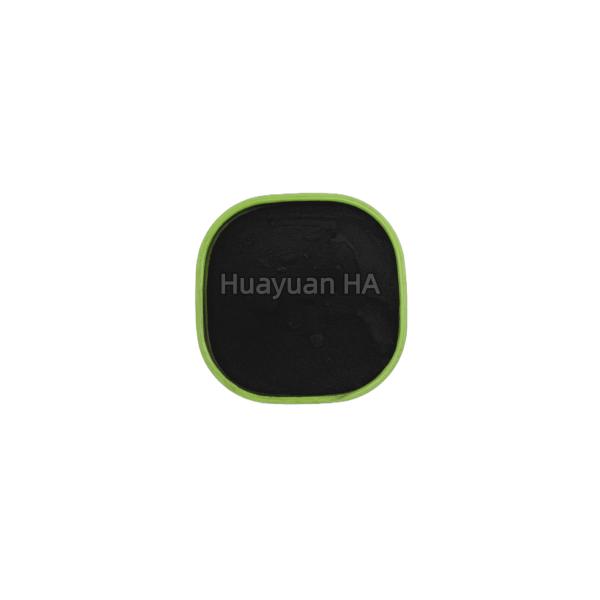| Sign In | Join Free | My benadorassociates.com |
|
| Sign In | Join Free | My benadorassociates.com |
|
| Categories | Potassium Fulvate Instant Powder |
|---|---|
| Brand Name: | Huayuan |
| Certification: | ISO9001 |
| Place of Origin: | Shanxi |
| Payment Terms: | L/C,T/T |
| Packaging Details: | 10KG, 25KG package, or 1 ton package and customer designated packing is available. |
| Fulvic Acid: | ≥50% |
| Appearance: | Dark Brown |
| Product Name: | On Sale Potassium Fulvate Instant Powder With Factory Price |
| HS Code: | 31059090 |
| Humic Acid: | ≥55% |
| Moisture: | ≤12% |
| Potassium Content: | 12% |
| Size: | 80-mesh pass rate is 100% |
| Company Info. |
| Shandong Huayuan Humic Acid Ecological Agricultural Science and Technology Co., Ltd. |
| Verified Supplier |
| View Contact Details |
| Product List |
Sourced from premium Leonardite—one of the richest natural sources of fulvic acid—this product undergoes a state-of-the-art extraction and refinement process that preserves the full spectrum of bioactive compounds while enhancing its solubility to an exceptional degree. Unlike traditional potassium fulvate products that may clump or dissolve slowly, our instant powder achieves complete dissolution in water within seconds, even at room temperature, eliminating the need for prolonged stirring or special equipment.
1. Soil Health Revitalization: increased soil fertility, reduced soil erosion, and a more
balanced soil pH, particularly in acidic or saline-alkali soils.
2. Enhanced Nutrient Uptake & Utilization: It binds to essential nutrients (including nitrogen, phosphorus,
potassium, and micronutrients) in the soil, converting them into
stable, water-soluble complexes that are not easily lost to
leaching or volatilization.
3. Crop Stress Resistance & Quality Improvement: The bioactive fulvic acid in the instant powder enhances crops'
natural defense mechanisms against environmental stressors.It also
elevates crop quality: for fruits and vegetables, it increases
sugar content, improves coloration, and extends shelf life.
| Moisture | ≤12% |
| Product Name | On Sale Potassium Fulvate Instant Powder With Factory Price |
| HS Code | 31059090 |
| Organic Matter | ≥75% |
| Fulvic Acid | ≥50% |
| Size | 80-mesh pass rate is 100% |
| Appearance | Dark Brown |
| Water Solubility | 100% |
| Product Category | Potassium Fulvate Instant Powder |
| CAS | 479-66-3 |

1. Staple Crops: Ideal for rice, wheat, corn, cotton, and soybeans. Applied as a
foliar spray or soil drench during key growth stages (such as
seedling, tillering, and flowering), it boosts yield by 10-15% and
improves crop resistance to adverse weather conditions like drought
or floods.
2. Oilseeds & Pulses: Effective for crops like rapeseed, sunflower, and lentils. It
enhances seed oil content and improves pod setting, leading to
higher-quality harvests.
3. Fruit Crops: Perfect for apples, oranges, grapes, strawberries, and mangoes.
When applied during fruit expansion and ripening stages, it
enhances fruit sweetness, improves skin texture, and reduces the
incidence of physiological disorders like bitter pit in apples.
4. Vegetable Crops: Suitable for tomatoes, cucumbers, peppers, lettuce, and carrots.
It promotes uniform growth, increases fruit yield, and enhances the
nutritional value (e.g., higher vitamin C content) of vegetables.
1. Foliar Spray (Most Common Method)
(1)Dosage: Dilute the powder with clean water at a ratio of
1:1000-1500 (i.e., 1 kilogram of powder mixed with 1000-1500 liters
of water). For sensitive crops (such as seedlings or delicate
flowers), use a higher dilution ratio (1:1500-2000) to avoid leaf
burn.
(2)Application Timing: Apply during the early morning (before 10
a.m.) or late afternoon (after 4 p.m.) when temperatures are lower
and sunlight is less intense. This prevents the solution from
evaporating too quickly and ensures maximum absorption by the
leaves.
(3)Method: Use a sprayer with a fine nozzle to apply the diluted
solution evenly to both the upper and lower surfaces of the leaves.
For large-scale farms, use a tractor-mounted sprayer for efficient
coverage. Repeat the application every 7-10 days during the crop's
active growth stages (e.g., seedling, flowering, and fruit
development).
2. Soil Drench/Irrigation
(1)Dosage: For soil drenching, use a dilution ratio of 1:800-1200
(1 kilogram of powder per 800-1200 liters of water). For drip
irrigation systems, add 0.5-1 kilogram of powder per hectare per
application.
(2)Application Timing: Apply during the early stages of crop growth
(e.g., after sowing or transplanting) to establish a healthy root
system, and again during nutrient-demanding stages (e.g., fruit
expansion).
(3)Method:
Soil Drench: Pour the diluted solution directly around the root
zone of the crop, ensuring the soil is thoroughly moistened.
Drip Irrigation: Dissolve the powder in a water tank, then connect
the tank to the drip irrigation system. Run the system for 30-60
minutes to ensure the solution is evenly distributed throughout the
root zone. This method is highly efficient and reduces water and
nutrient waste.
3. Seed Treatment
(1)Dosage: Dilute the powder with water at a ratio of 1:500-600 (1
kilogram of powder per 500-600 liters of water).
(2)Method: Soak the seeds in the diluted solution for 6-12 hours
(depending on the seed type: e.g., rice seeds soak for 8-12 hours,
vegetable seeds soak for 6-8 hours). After soaking, remove the
seeds, dry them to a slightly moist state, and sow immediately.
This treatment improves seed germination rate by 10-15%, enhances
seedling vigor, and reduces the risk of seed-borne diseases.
4. Mixing with Fertilizers/Pesticides
(1)Dosage: Mix 0.5-1 kilogram of Potassium Fulvate Instant Powder
with 50-100 kilograms of chemical fertilizer (e.g., urea, compound
fertilizer) or organic fertilizer (e.g., manure, compost). When
mixing with pesticides, use a dilution ratio of 1:1000-1200 and
ensure compatibility by conducting a small-scale test first.
(2)Method: Mix the powder with the fertilizer or pesticide
thoroughly before application. This not only improves the
effectiveness of the fertilizer/pesticide but also reduces their
potential negative impact on the soil and crops.

|